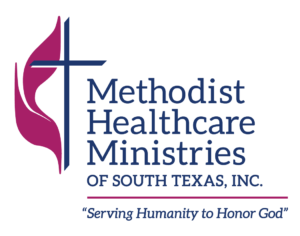This week I attended the Texas Energy Summit, held at the Legislative Conference Center at the Capitol. The agenda was packed with a great series of speakers and topics from Hydrogen to the Energy Transition to Microgrids, all with an eye towards keeping the electrical system in Texas reliable for residential and industrial customers now and in the future, given the growth in population and the likelihood of increasingly frequent extreme weather.
A common thread which ran throughout all of these discussions was the importance of energy efficiency. Any discussion of the stability of the electrical grid, now or in the future, requires that we use the energy we already have wisely. Doug Lewin said that energy efficiency measures are one tenth the cost of building additional gas generation capacity. And, improving energy efficiency has other benefits, like reducing CO2 emissions, improving air quality, and lowering energy costs.
Efficiency is not the only solution to our current grid instability, but any solution going forward must include energy efficiency as a major component. The most recent International Energy Conservation Code accounts for this and when followed for a given building, results in an 9.4% improvement in energy efficiency and nearly 9% reduction in greenhouse gas emissions.
Many energy efficiency improvements are readily available. Things like better insulating windows, energy efficient lighting, and switching to more efficient heat pumps instead of gas furnaces all take advantage of technology that is easy to find and install.
I was surprised to learn at the conference that 45% of Texans live in a state of energy burden, which means they must make choices between electricity and other necessities like food and rent or keep their living space at an unsafe or unhealthy temperature as a way to save money on electricity. Energy efficiency stands to benefit these utility customers by reducing their bills, but it can be challenging for low-income Texans to make necessary improvements to their homes. Often these families rent, rather than own, their properties and many incentive programs for energy efficiency require home ownership.
Two recent pieces of legislation have big implications for Texas’s energy future. First, the recently passed Proposition 7, which provides the Public Utility Commission of Texas funding to be used to issue loans for building new “dispatchable” energy generation capacity. The state considers a generation facility dispatchable when it can be brought online quickly and produce power continuously for more than 48 hours. The second is the Inflation Reduction Act, which funds energy efficiency and renewable energy programs for businesses, homeowners, non-profits, and more.
Unfortunately, the definition of dispatchable generation excludes most forms of renewable energy, but improvements in renewable energy, like adding battery storage alongside renewable generation which can store energy for use later when the resource is not available, mean that renewables continue to be an important part of the Texas energy portfolio. Indeed, Texas is the number one producer of wind energy and is poised to pass California to become number one in solar this year.
Proposition 7 also includes funding for microgrids, an emerging technology in which a subset of a community contains both electrical generation and a grid that allows it to operate independently, like a self-contained island, in the event the Texas electrical grid goes offline. Currently, the University of Texas is on a microgrid and so is Dell Children’s hospital. Microgrids have been used most often in the US to protect critical facilities like hospitals, nursing homes, and water treatment facilities from interruptions in electrical power during storms and other emergencies that disrupt the grid.
As we learned in Winter Storm Uri (2021), extended periods without electricity are dangerous for residential customers too. There is hope that expanding the use of microgrids will help Texas meet goals for grid stability, reliability, and also improve energy efficiency at the same time.
Demand response was another idea which was discussed frequently. This means that in times of peak demand for electricity, like in the late afternoon and early evening during the summer, customers could be incentivized financially to voluntarily decrease their electricity usage.
Imagine if instead of ERCOT telling us that we need to turn our AC up to 80 degrees in August so the grid doesn’t go down they told us that if we changed the times of day we washed our clothes, ran our ovens, and charged our electrical vehicles we would get a decrease in our electrical bill!
There are multiple opportunities for continued improvement in reducing the carbon emissions from our electrical utility system. Many of them would benefit from policy changes, like net metering and meter aggregation, both of which would spur solar installation at homes and businesses, further reducing strain on the grid and lowering energy costs. Implementing demand response for residential customers on a larger scale would help grid stability on the hottest and coldest days of the year and lower energy costs for consumers.
There are so many different angles to tackle in the effort to ensure safe, affordable, efficient, and reliable energy for the future of Texas. I am glad to know how many passionate and committed people are working on it and how many exciting technologies there are to make the most of the energy we have.

